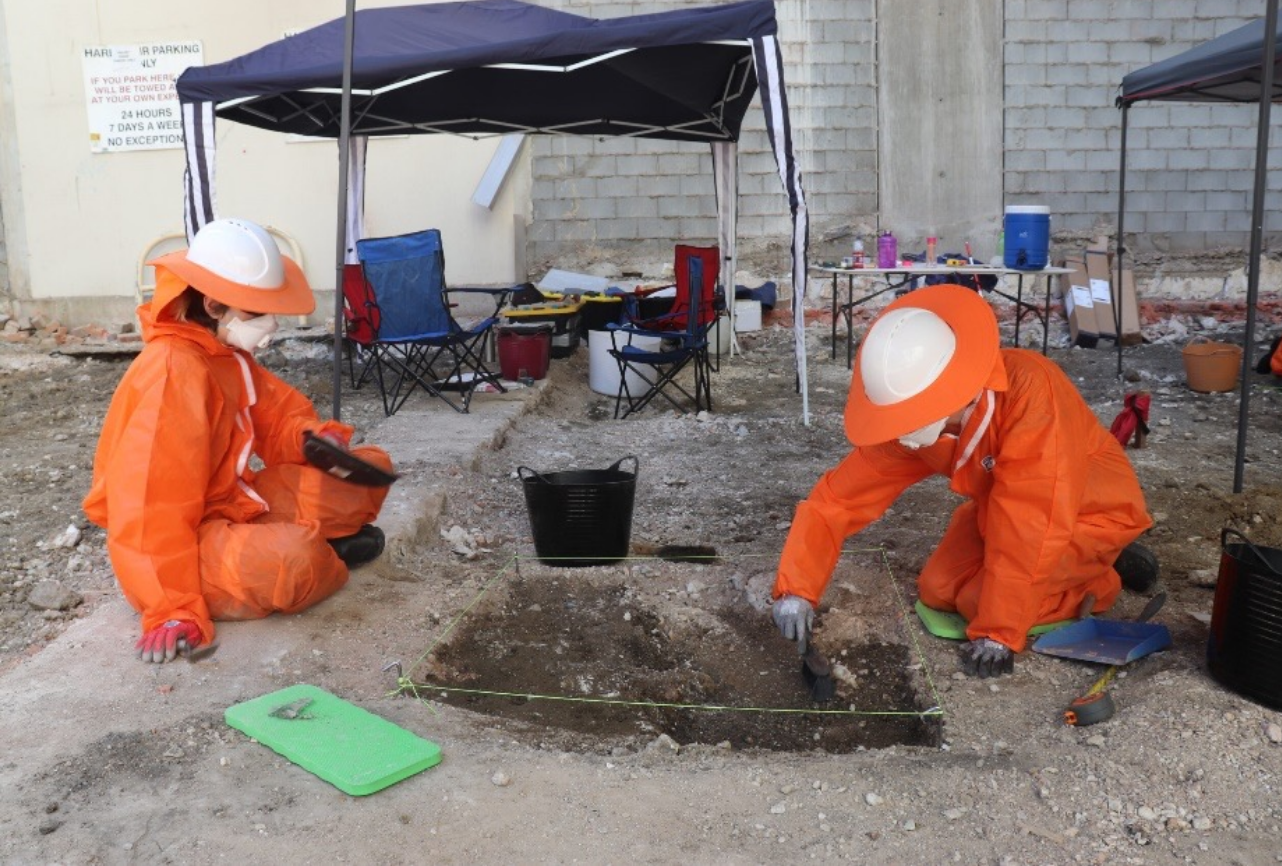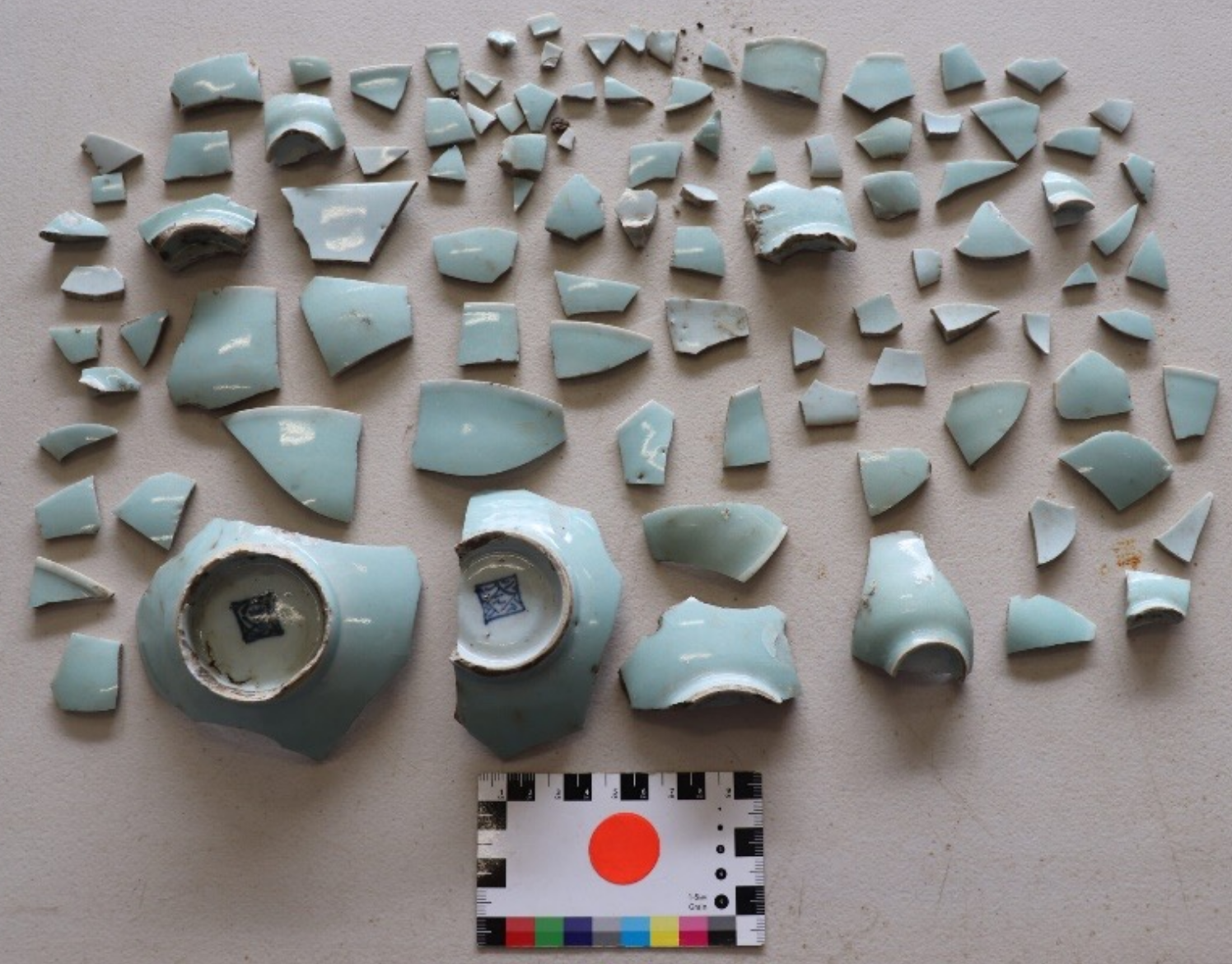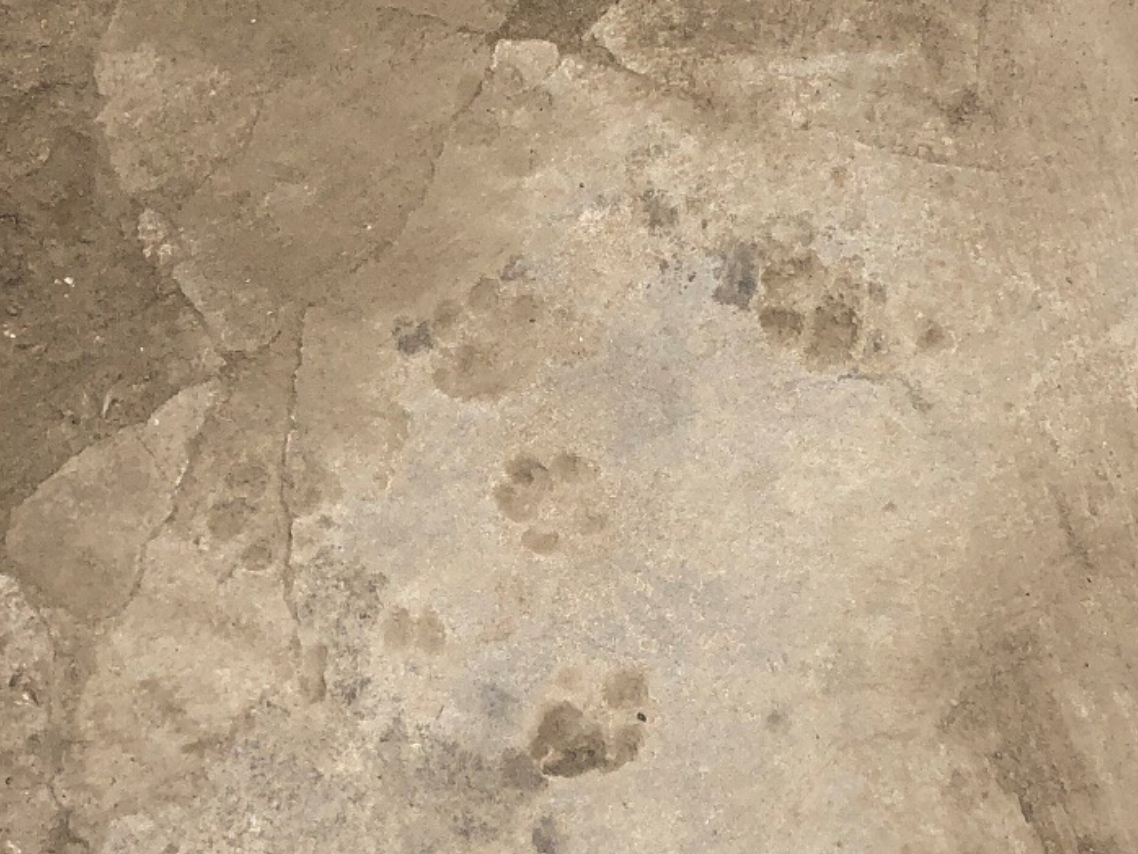Cross River Rail –
Historical archaeology update.
Client: CBGU JV/Pulse
Industry sector: Transport infrastructure
Service: Historical archaeology
Location: Brisbane, QLD
About this Project
The project
A large-scale, State government funded infrastructure project building an underground rail system linking North and South Brisbane. Four underground stations are being constructed – Dutton Park (Boggo Rd), Woolloongabba (old Landcentre and GoPrint site), Albert Street and Roma Street.
Our role in the project
Niche has provided archaeological services for the project, including the preparation of detailed archaeological assessments, research designs, advice and archaeological investigations within the underground station precincts and associated areas. These works were guided by the Cross River Rail Archaeological Management Plan, prepared by Niche, and have involved ground investigation and salvage of targeted areas of archaeological potential within the project footprint, artefact analysis and reporting to the client and State agencies. In delivering the project. Niche took a highly collaborative approach, drawing on existing links and expertise from the Queensland Museum and University of Queensland to move the project beyond compliance to one providing opportunities for public education and engagement, academic research and hands-on employment for budding archaeology students.
Doing our best to preserve a part of Brisbane’s history
The sites investigated by the project were diverse and fascinating, and reflected a range of activities within North and South Brisbane during the late 19th century and into the early 20th century. They included an early railway yard, two metropolitan garbage dumps, Brisbane’s first Chinatown and two hotels dating from the 1860s. One of the great challenges was to document and salvage the material remains of these places in a careful manner that would collect data and artefacts for later historical archaeological research while operating in a high-pressure environment, with tight project deadlines to be met and some very difficult site conditions.

But out of challenges come opportunities and we are fortunate to have an excellent team of archaeologists as well as broad networks in industry and academia which allowed us to mobilise skilled archaeological teams to undertake excavations, sometimes at quite short notice, that were on time and within budget. Out of this work have already sprung a range of broader education outcomes, including various seminars and online talks and university Honours and PhD research projects, that have brought benefits to both the client, in terms of positive community engagement, and sparking general community interest in Brisbane’s past.
The digging is now complete but Niche’s commitment to the project has not ended, for we continue to support the client with advice and encourage researchers and the general public to become involved in post-excavation activities.
“One of the key legacies of the project has been a collection of several thousand artefacts, including unique and rare items, providing a glimpse of life in Brisbane from the 1860s to early 1900s. This collection is being housed by the Queensland Museum for current and future research.”
Dr Kevin Rains – Senior Heritage Consultant, Brisbane
Cairo and his team of more than twenty assessors – all of whom are accredited under the NSW Biodiversity Assessment Method – engaged directly with landholders of properties containing the required biodiversity values to guide them through the Biodiversity Stewardship Agreement (BSA) process.
To date ten Biodiversity Stewardship Sites have been established as part of the Inland Rail Offset Program and – together with a further twelve sites being considered for a BSA – a total of approximately 20,000 hectares of land will be conserved in-perpetuity for conservation.
For landholders of properties containing biodiversity values, the establishment of a Biodiversity Stewardship Site can present a significant opportunity to generate income both from the sale of credits, and though ongoing payments for managing land for conservation, while retaining ownership.
Partnerships in large scale innovation
The project has led to Niche to form strong partnerships with specialist consultants in fire management, erosion control and ecological restoration, as well as species experts.
“Working collaboratively together, we’ve been really testing how new legislation applies on the ground and at landscape scale,” says Cairo.
Niche has partnered with MJD’s fire management consultants to develop the first Strategic Burn Plans under the new guidelines for our Biodiversity Stewardship Sites to improve and maintain the quality of vegetation on site through periodic ecological burning.
And, in partnership with Greening Australia, over 3,000 hectares of landscape is being restored using active and passive restoration techniques as part of the Inland Rail Offset Program.
On track to a sustainable future
“For our team at Niche, the Inland Rail Offset Identification Program offers exposure to a truly landscape-scale, nation-building development, as well as opportunities to experience fieldwork and collaboration with stakeholders in regional and rural locations throughout the state,” commented Cairo.
“And for me personally, it is rewarding to be involved in a project where innovative thinking is maximising environmental benefits while progressing sustainable development that benefits communities.”


Outcome for the community
Despite its status as the capital of Queensland, Brisbane is not particularly well documented archaeologically. This project will provide long-term benefits to the community through the recovery of information and artefacts that contribute significantly to a greater understanding of the city’s early development. The artefacts and structural remains that were revealed reflect past infrastructure, commerce and most compelling, allow for an intimate look at domestic life within an ethnically diverse community once situated within what is now the Brisbane CBD.
One such example was the discovery of a set of pawprints by Project Manager Dr Kevin Rains. The pawprints belonged to a small dog or puppy that had run over the concrete before it had dried. Located on the 1880s concrete floor beneath what was originally a series of early Chinese shops, this moment of life had been frozen for 140 years and had the team guessing: who owned the little dog, the shopkeeper, or a customer? and did it get into trouble for its misdeed?
The project along with its exposures provides invaluable insights for the public and works towards telling the stories as well as experiences of past communities that have previously lacked representation.
The advantages we delivered to this project
- Locally based and experienced heritage consultants
- Excellent collaborative approach with State agencies and the university sector to deliver high quality outcomes on time and within budget.
Excellence in your environment
- Contact us to discuss how we can support your project.
- Read more about our environmental management and approvals, and heritage management services.
